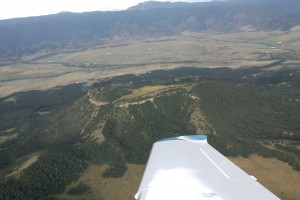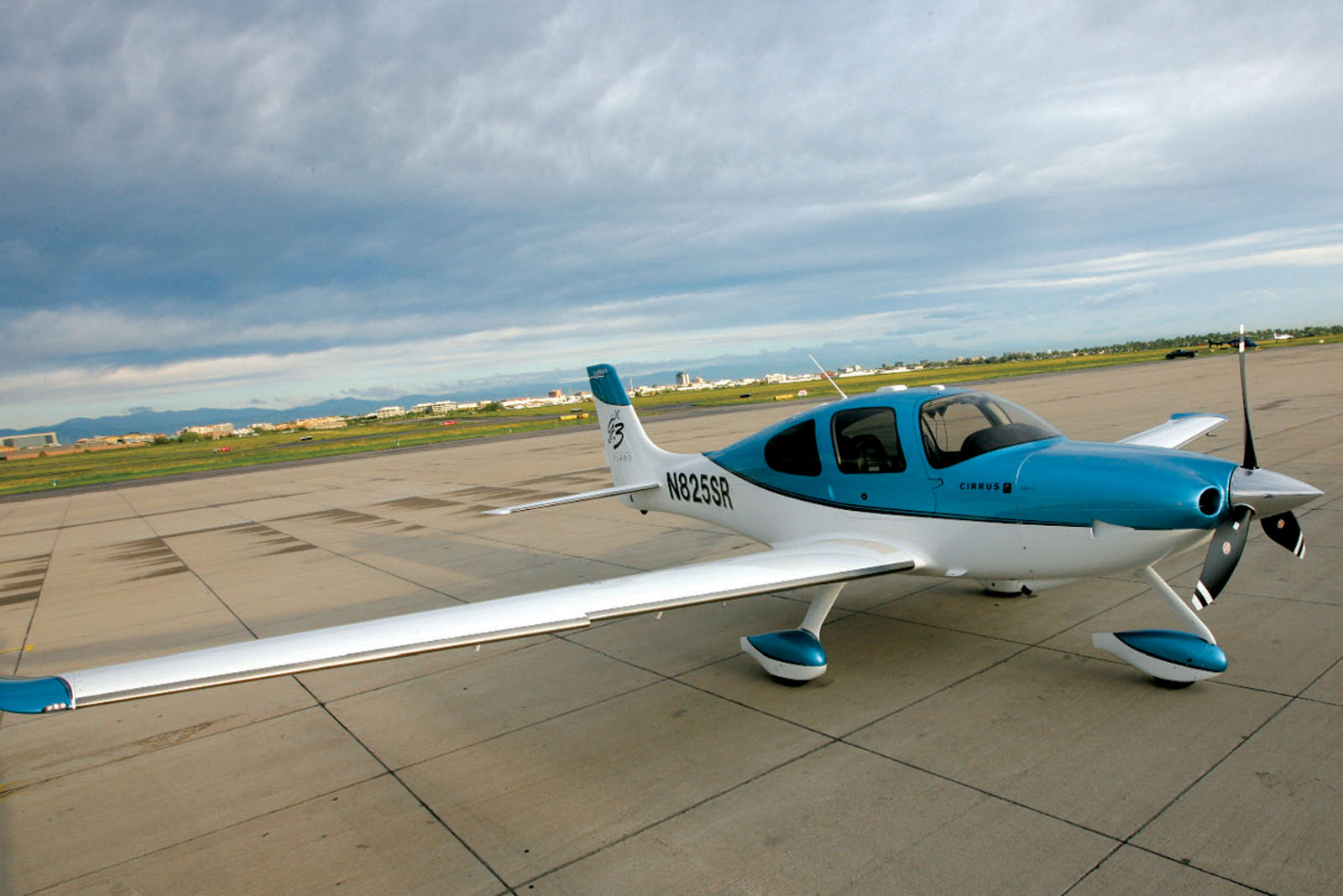By Reggie Paulk
Friday, Aug. 24, dawned with a mid-level stratus layer hovering above the Denver area, hinting at smooth air aloft. At 6:30 a.m., the rising sun cast its golden glow upon the morning traffic as we drove to Centennial Airport and the Denver jetCenter.
I was scheduled to meet with Justin Steinke of Sky Shares, LLC at 7:00 a.m. in the Denver jetCenter lobby. At 6:45, 15 minutes before our appointment, I spotted Justin already waiting patiently in the lobby, his company’s Cirrus SR22-G3 ready on the ramp. After dispensing with a few pleasantries, Steinke led the way to the blue and white airplane.
Before departure, we took advantage of the excellent light in order to photograph the airplane. The SR22’s seamless composite construction glowed in the morning sun, and its large size became readily apparent as we walked around it. For a four-seat single, it looks like many six-seaters. At the front of the airplane, a massive three-blade composite Hartzell propeller stood ready to convert the 310 turbo-charged horses of the Continental IO-550-N into sheer, unadulterated thrust.
Steinke opened the gull-wing doors, and we climbed into elegant black leather seats with blue stitching. Once seated, the doors closed with a solid thunk and we secured our four-point shoulder harnesses. The shoulder harnesses seemed slightly bulky, but they contain airbags (yes, airbags!) that deploy in the event of a crash. Bose headsets completed the luxurious interior appointments.
Observing the panel of the airplane before engine start, it seemed rather empty. Dark screens cover most of the panel and much of the center console. Automotive-style climate controls and backup airspeed, altimeter and attitude indicators are the only gauges that stand out while the power is off. Even the side-stick controls sit nicely out of the way. After engine start, the master switch brings dual Avidyne Entegra displays and twin Garmin GNS-430 units online. While the Avidynes booted up, we obtained the ATIS and switched to ground for taxi clearance.
After a run-up check, tower cleared us for takeoff, and we taxied into position for a south departure on 17 left. As the power went to full, the airplane immediately began accelerating. We were pressed hard into our seats until after liftoff, at which time the airplane began climbing at better than 1,000 feet per minute. We cruise-climbed to 8,000 feet MSL, leveled off, and began ratcheting up the airspeed until the Avidyne displayed a true airspeed of 189 knots at 28.5 inches of manifold pressure—that’s 217 miles per hour in an airplane with fixed gear!
Once we were cruising, Steinke handed control of the airplane over to let me get a feel for its handling qualities. The side-stick control takes a little getting used to, but the fighter-like roll response and neutral stability of the Cirrus means it goes where it’s pointed. Once established in a bank, the airplane stayed put as though on rails. Stalls were very benign, with a great deal of backpressure required to get the airplane to the pre-stall buffet, and even more pressure required to get it to break. The airplane stalls straight ahead with a slight tendency to lower a wing, but nothing spin-like. Proper use of rudder keeps everything in check.
Cruising back toward Centennial, we played with the full complement of digital toys available in the airplane. After requesting an ILS approach into Centennial from Denver Center, Steinke demonstrated the capability of the airplane’s avionics.

The SR22’s expansive Plexiglas makes it a wonderful sightseeing platform. This is Dawson Butte, just south of Castle Rock, Colo.
Cleared into the Denver Class B airspace, we were told to maintain 8,200 feet and were given a heading to intercept the ILS 35R localizer at Centennial. Normally, that would mean grabbing the approach plate and getting the horizontal situation indicator or VOR set up properly, all while trying to figure out exactly where in the world you are. Not so on this airplane. The dual flat-panel Avidyne system constantly displayed a spine-tingling array of situational-awareness in full-color splendor. Not only do they display color-moving maps, but that information can also be overlaid with any desired amount of instrument chart data from a Jeppesen digital flight bag.
An XM weather downlink provides real-time weather, which rounds out the avionics capabilities. With the autopilot engaged, the airplane easily flew a coupled approach. All the pilot has to do is monitor the power and flaps to maintain airspeed, then disengage the autopilot when it’s time to land.
While not certified for known icing, this Cirrus is equipped with a TKS weeping wing system. The SR22 is also the only certified airplane equipped with a parachute. Mounted in the center of the ceiling above the pilot’s head is a red-anodized aluminum handle that, when pulled, fires a rocket attached to a parachute that will lower the entire aircraft and its occupants to safety.
As we taxied back to Sky Shares’ hangar, the cabin began to heat up from the sun shining through the glass, so we turned on the air-conditioning to cool things down a bit. Sure, it adds 50 pounds to the empty weight of the aircraft, but it definitely felt good.

Justin Steinke shows how to use the flight planning and scheduling features from Sky Shares’ hangar/office. A leather couch makes waiting for the pilot an easy affair.
So, other than getting to fly the latest generation luxury SR22, what else does a Sky Shares fractional offer? Sky Shares owners can expect the same high level of professionalism and service as I was presented with the morning of our flight. Simply schedule the airplane via an online system, and Sky Shares takes care of the rest. From filing your flight plan, properly fueling the airplane or positioning it to a suitable airport in the Denver metro area, you can expect turnkey service for your flying pleasure. All of the aircraft’s data services and maintenance issues are taken care of seamlessly and without owner involvement. Beyond that, Sky Shares provides paper charts in the aircraft, in addition to the electronic flight bag, as a backup. Add the on-board Bose headsets, and all you have to do is bring your passengers, bags and itinerary. Sky Shares has eliminated everything that makes aircraft ownership a tedious affair.
If you’ve been considering owner-flown fractional ownership, but don’t know if you’re ready to take the plunge, Sky Shares offers a way for you to dip your toe in the water first. With SMARTShare evaluation packages, it’s possible to fly the airplane for up to 100 hours before deciding to purchase a share. In addition to shares in the SR22-G3, Sky Shares also has a position on Cirrus’ unnamed seven-seat, single-engine jet. Owners of an SR22 fractional will be front and center for offerings on the jet; it’s also possible to reserve a position on the airplane for $12,500. If you’ve been thinking about fractional ownership, consider Sky Shares.
For more information, visit [http://www.myskyshares.com] or call 877-MY-SKY-01.














